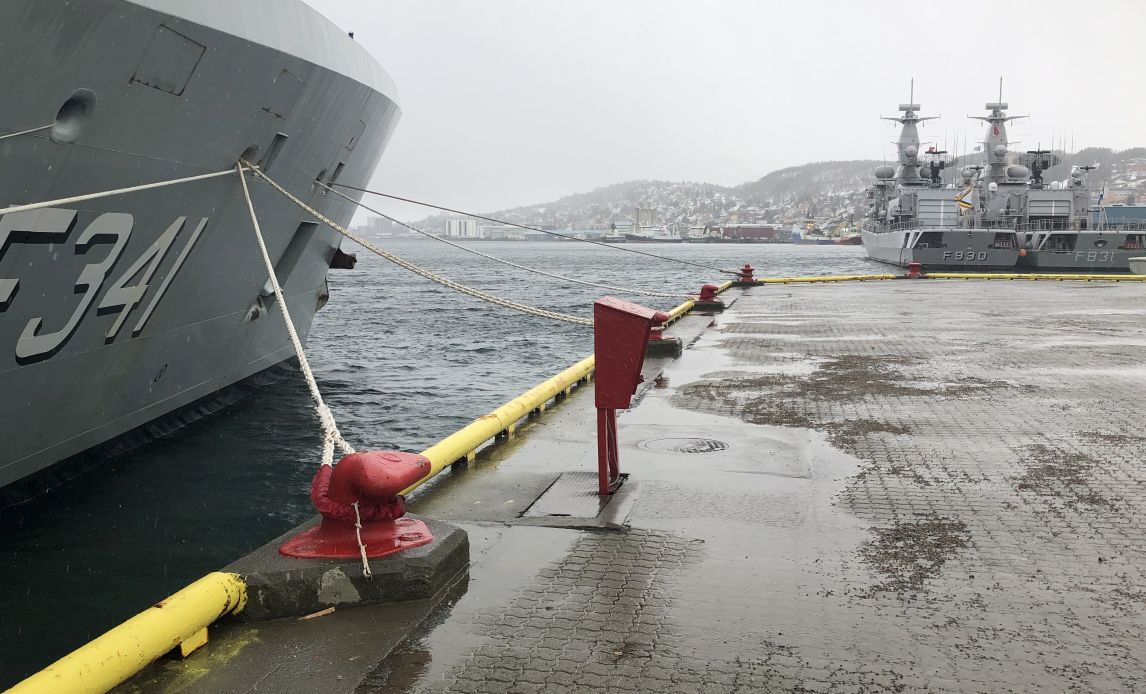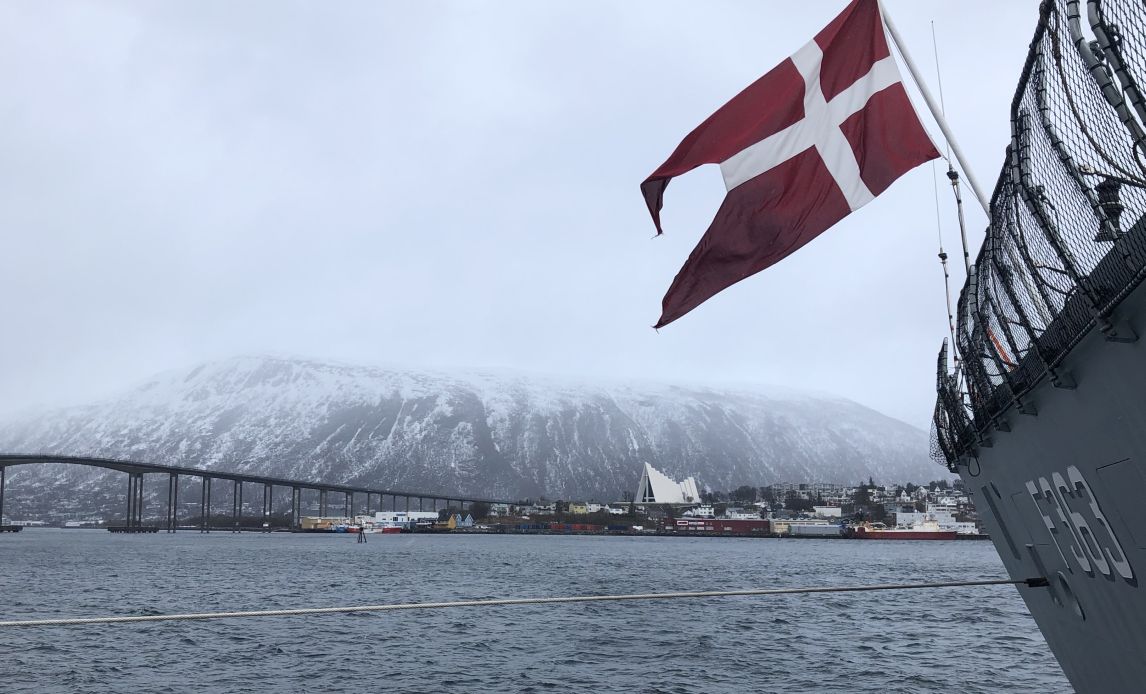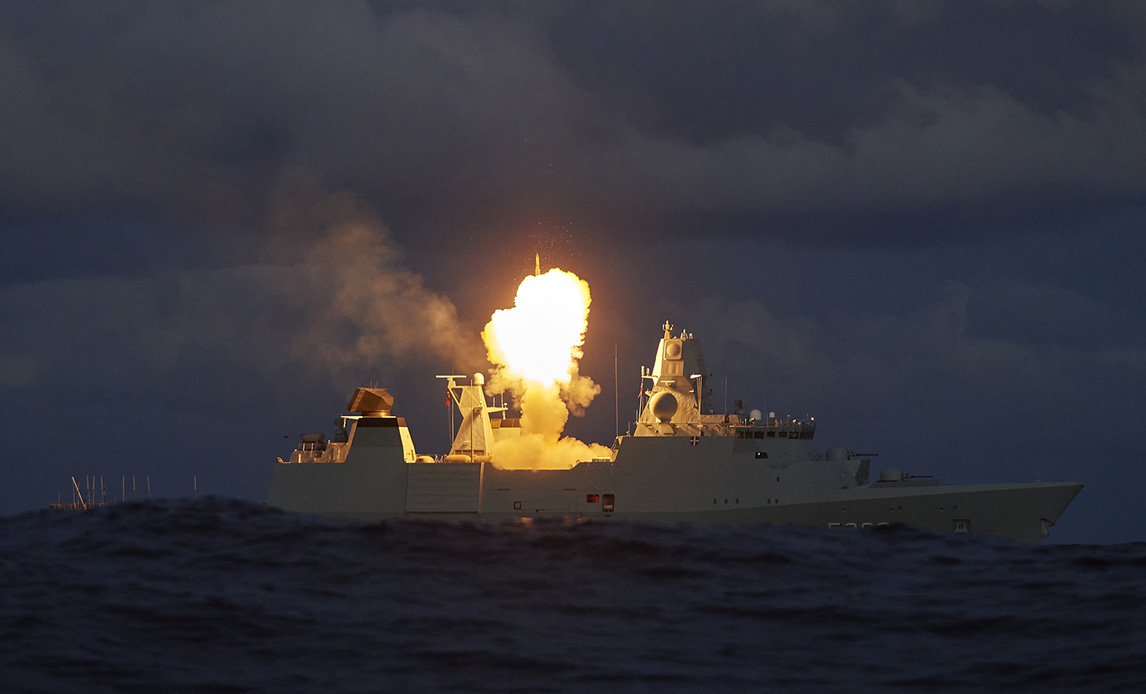Denmark heads naval force at missile live-fire exercise
Danish naval vessels are currently participating in one of the most advanced maritime exercises, with a multinational naval force 500 km north of the Arctic Circle firing missiles and naval guns. The exercise is under Danish command.

The frigate Absalon at the quay in the north-Norway town of Tromsø together with Belgian Leopold and Dutch Van Amstel before the start of the exercise. Photo: Steffen Fog, Danish Armed Forces
By the Defense Command
Exercise Mjølner will train NATO warships in the use of missiles and naval guns in maritime operations.
Together with navy vessels from Belgium, the Netherlands, Norway, and Germany, the Danish frigates Niels Juel and Absalon will train how to obtain situational awareness at sea and in coastal areas, how to respond to surface and air threats, and how to coordinate courses of action when faced with enemy vessels, aircraft, and missiles. The exercise takes place off Norway, north of the Arctic Circle.
In order to create a realistic environment for the crews and weapons systems, small high-speed target drones are deployed. These airborne targets must be detected and acquired by the frigates' crews, sensors, and radars, and subsequently engaged and defeated by missiles and naval guns. The aim of the exercise is to make sure that all this happens in coordination with the other vessels and aircraft. At the same time, it is checked that all parts of the on-board technical systems, the missiles themselves, and the additional weapons systems function as intended.
"It is very useful to carry out the exercise together with our allied partners. It gives us the opportunity to train cooperation between the crews and the countries. This capability has really great utility, for example in a multinational mission," says Deputy Commander of the Danish Navy, Commodore Captain Carsten Fjord-Larsen.
Norway has a large maritime firing range, with ample space for this type of live-fire exercises, so the training and the fire procedures can be executed safely and in a realistic way.
“We are carrying out this exercise because Denmark must maintain its ability to contribute with frigates with the capability to conduct missile defense in multinational missions. It is a central part of the modern range of naval capabilities. Naturally, we use this opportunity to train that,” says Commodore Captain Carsten Fjord-Larsen.

The Niels Juel at the quay in the north-Norway town of Tromsø. Despite unstable weather with snow and clouds, the characteristic Arctic Cathedral can be seen in the background. Photo: The Armed Forces.
During the exercise, both SeaSparrow and Harpoon missiles as well as long-range and short-range naval guns will be employed.
"I am very pleased with the conduct of the exercise. This is a unique opportunity for the Danish Navy's vessels to fire live rounds from long-range weapons, coordinated with the other nations and at the same time a very important part of a frigate crew's training. It is a complicated scenario with multiple simultaneous threats in two dimensions, involving target data from third parties. Therefore, it obviously has to be drilled, in the same way that we must verify that the systems work as intended. Denmark is in command of the naval exercise force, and the Absalon has an embedded multinational staff on board. This gives Denmark the opportunity to train applied naval leadership in the context of eight vessels from five different nations, totalling approx 1,000 personnel," says exercise Chief of Staff, Commodore Captain Dan B. Termansen. "It takes us to the required level of readiness."
Facts about Exercise Mjølner
The exercise takes place in the area north of Vestfjord in Norway from May 7 to May 13 2022.
The exercise is also called "Above Water Warfare Live Firings" (AWWLF). Originally it was a Dutch training activity designed to train live-fire procedures with ship-based missiles and naval guns in a realistic setting. The exercise takes place every second year.
Frigates Niels Juel and Absalon make up the Danish contribution; the latter will be the flagship of the force with the force commander and the command staff on board under the command of 2nd Squadron Commander Dan Termansen, who during the exercise will carry the temporary rank of Commodore Captain.
The Danish participation in the exercise is expected to generate data and lessons learned for the further development of capabilities and doctrine at the Navy's operational units. The processing and analysis of exercise output will be carried out by the Section for Weapons Tactics under the Navy Center for Tactics, which has the main responsibility for planning the exercise and analyzing exercise results.
The Navy's Center for Weapons Technology participates in connection with the launching and control of the drone systems used as targets for all firing units during the exercise.
